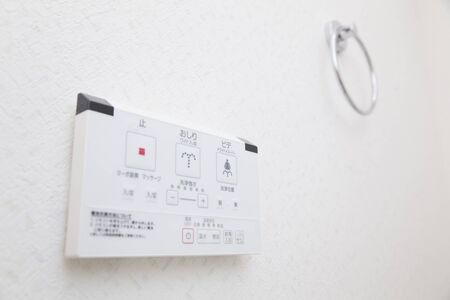1. Understanding the Basics
If youre considering upgrading your home lighting, its essential to understand the fundamental differences between smart bulbs and smart switches. Both offer a modern approach to lighting control, but they work in distinct ways and provide unique features. Smart bulbs are Wi-Fi or Bluetooth-enabled light bulbs that can be controlled individually through an app or voice assistant, allowing for easy color changes, dimming, and scheduling. In contrast, smart switches replace your existing wall switches and control the power flow to standard light fixtures, making them ideal for managing multiple lights at once or fixtures with non-smart bulbs. While smart bulbs usually offer more advanced features like color tuning and scene setting, smart switches provide broader compatibility and keep your traditional light controls functional for everyone in the household. Understanding how each option operates—and their key capabilities—will help you decide which solution best fits your lifestyle and home automation goals.
Installation and Compatibility
When it comes to choosing between smart bulbs and smart switches, installation and compatibility are key factors that can make or break your decision. Understanding the setup process for each option, along with how they work with your existing wiring, light fixtures, and preferred smart home platforms, will help you avoid unnecessary headaches down the road.
Setup Process: What to Expect
| Smart Bulbs | Smart Switches | |
|---|---|---|
| Installation Difficulty | Simple—just screw in like a regular bulb | Moderate—requires replacing wall switch, some electrical work involved |
| Tools Required | None | Screwdriver; may need voltage tester |
| Time Commitment | Under 5 minutes per bulb | 15–30 minutes per switch (depending on experience) |
Wiring and Fixture Considerations
Smart bulbs are plug-and-play in most standard fixtures. However, their functionality can be limited if the light switch is turned off—cutting power to the bulb also disconnects it from your network. Smart switches replace your existing wall switches and control all bulbs connected to that circuit, allowing traditional operation alongside app or voice control. If your home has older wiring, especially if it lacks a neutral wire (common in homes built before the 1980s), installing smart switches could require extra adapters or professional help.
Compatibility with Smart Home Platforms
| Smart Bulbs | Smart Switches | |
|---|---|---|
| Works with Alexa/Google Home/Siri? | Most brands do (check specs) | Most brands do (check specs) |
| Supports Scheduling/Automation? | Yes, via app/platform integration | Yes, via app/platform integration |
| Dimming/Color Control | Wide range of features (dimming, color changing) | Dimming varies by model; color typically not available |
Summary
If you want minimal installation hassle and enjoy features like color changing, smart bulbs are a great fit. If you’re comfortable with basic electrical work and prefer seamless integration with existing wall controls for all users, smart switches might be the smarter choice. Always check compatibility with your home’s wiring and your preferred smart ecosystem before making a purchase.
![]()
3. Functionality and User Experience
When it comes to smart lighting, everyday use is where the real differences between smart bulbs and smart switches become clear. Smart bulbs offer direct control over individual lights via smartphone apps, remote controls, or voice assistants like Alexa and Google Assistant. This means you can change colors, dim the lights, or set specific moods for each bulb without physically interacting with a switch. Scheduling is straightforward: you can program bulbs to turn on at sunset or set up routines for wake-up and bedtime. Scene settings let you create customized lighting environments—think “movie night” or “focus”—all from your phone.
On the other hand, smart switches give you centralized control over entire rooms or circuits. Instead of managing each bulb separately, you manage all lights connected to that switch, which is perfect if you want traditional wall control alongside smart features. Smart switches also work with most bulbs, so you won’t need to replace existing fixtures. While they may not offer color-changing or advanced scene options per bulb, they excel in convenience for larger areas and simplify voice commands (for example, “turn off kitchen lights” controls everything wired to that switch). Scheduling and automation are robust as well, letting you coordinate multiple fixtures with a single command.
The choice comes down to your lifestyle and preferences: if you want granular control and dynamic scenes, smart bulbs shine; if you value simplicity, compatibility, and physical switches for family members or guests, smart switches may be the better fit. Both options integrate with major smart home platforms but deliver distinctly different user experiences in daily life.
4. Energy Efficiency and Cost
When deciding between smart bulbs and smart switches, understanding both the initial investment and ongoing costs is key. Each solution offers unique advantages in terms of energy efficiency, upfront price, and long-term savings.
Up-Front Costs
Smart bulbs usually have a higher per-unit cost compared to traditional bulbs, but they dont require changes to your homes wiring. In contrast, smart switches are typically more expensive up front than regular switches and often require professional installation if youre not comfortable working with electrical systems. Heres a quick comparison:
| Smart Bulbs | Smart Switches | |
|---|---|---|
| Unit Price (average) | $10–$25 per bulb | $30–$60 per switch |
| Installation | No wiring needed | May require electrician |
| Additional Devices Needed | No (per fixture) | No (controls multiple fixtures) |
Energy Usage and Savings
Both smart bulbs and smart switches contribute to energy savings, but they do so differently. Smart LED bulbs are highly efficient by design, using far less electricity than incandescent or CFL alternatives. They also allow for dimming and scheduling, which further cuts down on unnecessary usage. Smart switches control the power supply to existing bulbs—LEDs or otherwise—allowing you to automate on/off times across entire rooms or circuits. If you retrofit an entire home with LED bulbs plus smart switches, you maximize your energy savings potential.
Long-Term Savings Overview
| Smart Bulbs | Smart Switches (with LEDs) | |
|---|---|---|
| Lifespan (average) | 15,000–25,000 hours | Depends on bulb used (LED: 15,000–25,000 hours) |
| Energy Consumption* | ~9W per bulb (LED equivalent) | Same as installed bulb type |
| Savings Potential** | High (bulb-by-bulb control) | High (whole-circuit automation) |
*Based on typical LED smart bulb
**Savings depend on household usage patterns and automation routines.
The Bottom Line: Which Is More Cost-Effective?
If you want precise control over individual lights or only plan to upgrade a few fixtures, smart bulbs might make sense despite the higher per-bulb cost. However, for larger homes or when upgrading many lights at once—especially if you already use efficient LED bulbs—smart switches can be more economical in the long run by automating entire rooms with a single device. Consider your current lighting setup and how much hands-on control versus broad automation best fits your lifestyle.
5. Aesthetics and Flexibility
When it comes to home decor and lighting customization, smart bulbs and smart switches each offer distinct advantages. Smart bulbs shine in terms of flexibility—they’re available in a wide range of shapes, sizes, and finishes to complement any interior design style. Many models support millions of colors and adjustable white tones, allowing you to easily set the mood for any occasion, from cozy evenings to vibrant parties. Dimming is typically built-in, so you can fine-tune brightness levels directly from your app or voice assistant without worrying about flicker or compatibility issues.
On the other hand, smart switches maintain your existing light fixtures and bulbs, which can be a huge plus if you’ve invested in statement lighting or specialty bulbs like Edison-style LEDs. The switch itself becomes the smart component, leaving the appearance of your space untouched while adding modern control features. However, color-changing and advanced dimming options are limited by the type of bulb installed—standard bulbs will only provide on/off and basic dimming (if supported). For most homes aiming for a cohesive look with traditional aesthetics or designer fixtures, smart switches seamlessly blend technology into the background without altering your room’s visual appeal.
Ultimately, if your priority is creative lighting with maximum adjustability in color and brightness, smart bulbs are the clear winner. But if you want to preserve the look of your current fixtures and keep things simple, smart switches may better suit your vision for an integrated and stylish living space.
6. Best Fit for Different Lifestyles
Choosing between smart bulbs and smart switches often comes down to your lifestyle, living situation, and personal preferences. Here’s how you can decide what fits best based on common scenarios:
Renter vs. Homeowner
For Renters
If you’re renting, smart bulbs are typically the way to go. They require zero electrical work and can be installed or removed without impacting the property—perfect for anyone who moves frequently or isn’t allowed to make permanent changes. Just screw in a new bulb, connect to your app, and you’re set.
For Homeowners
Homeowners have more flexibility. If you’re settled in your space and want a seamless look with wall controls, smart switches may be worth the investment. While installation is more involved (and sometimes requires an electrician), they offer whole-room automation without needing multiple bulbs, making them ideal for larger homes or anyone looking to future-proof their lighting system.
Tech-Savvy Level
Beginner-Friendly Options
Smart bulbs are generally more user-friendly for those just getting started with smart home tech. Most models are plug-and-play with easy-to-follow app instructions—no wiring required. If you value simplicity, this route keeps things straightforward.
Advanced Users
If you’re comfortable with home improvement projects or want advanced customization (like automating entire circuits), smart switches open up more possibilities. They integrate well with platforms like Alexa, Google Assistant, or Apple HomeKit, giving you granular control over your environment.
Smart Home Goals
Room-by-Room Flexibility
If your goal is to personalize lighting in specific rooms or experiment with color settings, smart bulbs give you maximum flexibility. Change the mood with a tap—great for bedrooms, living spaces, or home offices.
Whole-Home Automation
If you’re aiming for a cohesive, integrated smart home where lights respond to schedules or sensors throughout the house, smart switches are often the better foundation. They control entire fixtures regardless of bulb type and keep light controls intuitive for everyone—even guests unfamiliar with smart tech.
Bottom Line
Your ideal choice depends on whether you rent or own, your comfort level with technology, and your vision for a smarter home. Take stock of your needs and lifestyle before making the switch—or screwing in that first smart bulb.
7. Final Thoughts: Making Your Choice
Choosing between smart bulbs and smart switches ultimately comes down to your unique needs, preferences, and living situation. For American homeowners, smart switches often offer a seamless, whole-home solution that maintains traditional wall switch functionality while enabling remote control and automation. This can be ideal for families or anyone wanting to upgrade multiple rooms without swapping out every light bulb. Renters, on the other hand, may gravitate toward smart bulbs because they’re easy to install and take with you when you move, making them a flexible and affordable option for apartments or temporary homes.
Consider your home’s wiring, budget, compatibility with existing smart home systems (like Alexa, Google Assistant, or Apple HomeKit), and whether you want physical switch control. Smart switches are great for common spaces and permanent setups, while smart bulbs let you experiment with color and ambiance in bedrooms or entertainment areas. Both options offer energy savings and convenience but cater to different lifestyles.
In summary, if you want broad control with minimal device changes and don’t mind some upfront installation work, smart switches might be right for you. If flexibility, ease of use, and personalization are your top priorities—especially in rental spaces—smart bulbs could be the better fit. By weighing these key considerations, American homeowners and renters can confidently choose the smart lighting solution that best matches their everyday life.


